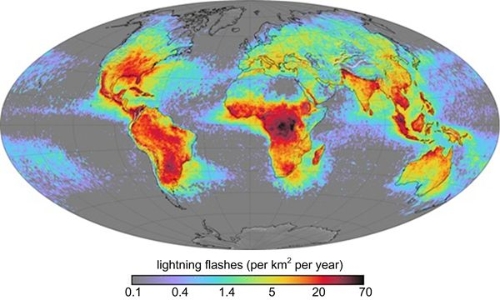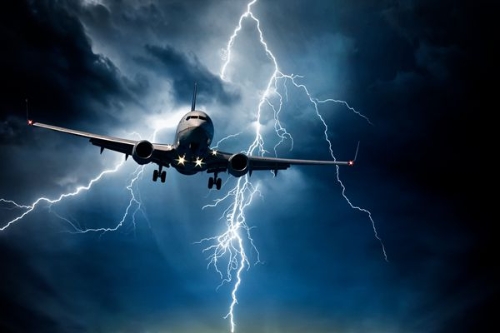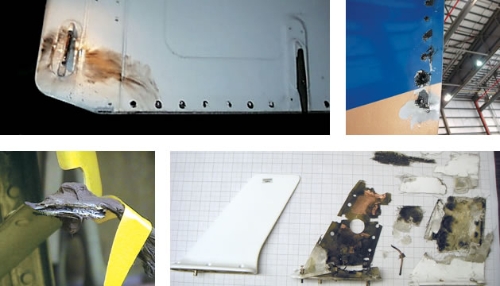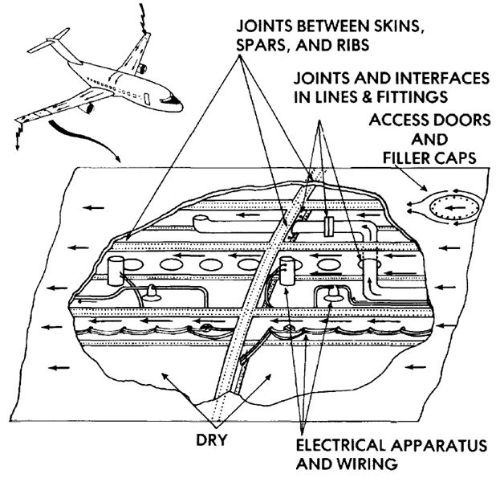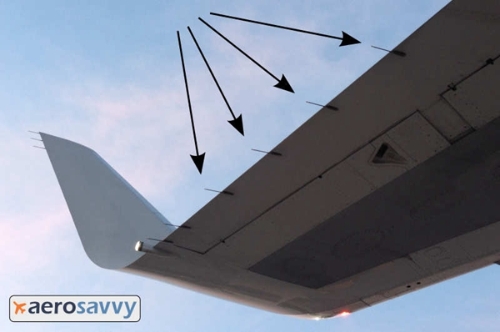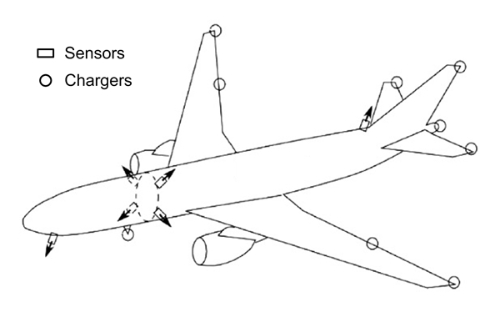How Aircraft Defend against Lightning Strikes?
Lightning strikes can influence flight safety. But due to extensive lightning-strike protection in modern airplanes, just take it easy.
In hot summer days, there is no doubt that heavy rainfall can make people completely relaxed and happy. However, rain dose not only leave behind a coolness, but also annoying thunder and lightning. Once the charge and the corresponding electric field intensity in some part of the atmosphere are excessive, the air will be penetrated and then the lightning occurs. The lightning brings huge damage to human activities on the globe’s surface, and influences flight safety simultaneously.
According to statistics, about 40 to 50 times of lightning happen per second in the world, and the total number can be up to 1.4 billion for a year. On average, a commercial aircraft experiences lightning strikes at least once per year. Nearly half of the aircraft disasters are resulted from meteorological problems, out of which more than 60% are related with lightning.
Worldwide lightning activity (Source: NASA)
What happens when lightning hits an airplane?
As we know, the lightning generally occur in cumulonimbus of the troposphere, while most airliners fly in the stratosphere. In other words, the lightning occurs below the airliner, why the strike can still take place? It is really true that the cruising in the stratosphere is safe and stable. Nevertheless, the airplane has to pass through the troposphere during take-off and landing. At this time, the airplane will encounter the lightning inevitably. In case the airplane is struck by lightning, serious aviation accident may be induced.
A commercial aircraft experiences lightning strikes at least once per year (Source: www.thermofisher.com)
Direct effects of a lightning strike can be identified by damage to the airplane’s structure, such as burn, melt, pitting and deformation. Enormous energy is transmitted within a few microseconds when the lightning current travels through the airplane, leading to melt or vaporization of material, and destruction or distortion of components. The situation will be even worse if flammable fuel-air mixture exists around the fuel valve. It is probably that ignition arises, thus causing catastrophic explosion. In December 1978, a US C-130 transport aircraft was struck by lightning and the fuel system was damaged, resulting in the tragedy of airplane crash and death.
In addition to the visible damage mentioned above, lightning can also cause variable magnetic field around the airplane. Consequently, inductive voltage and current form in the airplane internal circuit. Modern airplanes are commonly equipped with advanced electrical and electronic equipments such as flight control system, and more and more composites are adopted in structures in order to reduce cost and weight. It is widely known that the electrical and electronic equipments are sensitive to the electromagnetic environment. Besides, due to that the electrical conductivity of composite is much lower than metal (this indicates that the composite can absorb more energy and exhibit extremely limited electromagnetic shielding property), the composite structures are also sensitive to the electromagnetic environment. Because of the existence of such electromagnetic effect, lightning is able to interfere the electrical and electronic equipments and threaten flying security.
Clockwise from upper left: Lightning damage to a horizontal stabilizer, rudder, antenna, and bond jumper (Source: www.boeing.com)
How airplanes are protected from lightning?
The most efficient method to deal with lightning is escape. Airborne meteorological radar and ground weather forecast can help the pilot to obtain the flying environment constantly. Therefore, the airplane can be kept to fly away from the region with severe thunderstorm. However, for the sake of airplane and airborne equipments, lightning protection design should also be employed.
Fuel system is no doubt the most significant part in airplane lightning protection design. To avoid explosion, the fuel system is always placed in area with less electric arcs. Meanwhile, the fuel system and its possibly charged components are designed as low impedance paths. Thus, the heat that lightning generates will be small, and electric spark is hard to take place in component clearances. For the same reason, the joints between skins, spars and ribs are also designed as low impedance paths. In general, the aforementioned lightning protection method can be summarized as a word: transmission.
Lightning current paths in a fuel tank and potential problem areas (Source: NASA)
Though the transmission method is effective, the current remains in the fuselage. Why do not discharge directly? Don’t worry, the aircraft designers have taken this into consideration. Nowadays, the jutting regions such as vertical stabilizer and wing tip are all armed with discharge wicks, which can safely discharge the electricity back into the atmosphere. While the discharge wick is aimed at the flight state, lightning protection belt plays a role after landing. The belt is connected with the ground and can discharge the lightning current into the earth.
Discharge wicks of a Boeing 767 (Source: aerosavvy.com)
In recent years, researchers from Massachusetts Institute of Technology report that the risk of lightning strike can also be reduced by charging the aircraft. It is found that the fuselage becomes polarized before the lightning strike, and the local electric field on the aircraft surface and its vicinity, at both the positive and negative ends, is amplified. This local electric field intensification can lead to the initiation of a bidirectional leader. It is this bidirectional leader that results in the final lightning strike. Hence, the researchers propose hindering the initiation of the positive leader by charging the aircraft to a negative level, selected to ensure that a negative leader will not form. The criterion for this charge inception is based on surface fields reaching the corresponding breakdown thresholds, which are detected by sensors.
Schematic of the envisioned implementation of a charge control strategy for lightning strike risk reduction (Source: Ref. [6])
Last but not least, modern airplanes have incorporated extensive lightning-strike protection. Lightning strikes to airplanes are not unusual, and they merely mean intense flash and thunderclap. It has been many years since a lightning strike was implicated in a deadly air disaster. Take it easy!
Chinese<<<
References:
[1] Wang T S. Lightning protection of aircraft. Aircraft Design, 2001, 21(4): 48-52.
[2] Wang T S, Lei H, Li F, et al. Design of lightning protection and certification test for aircraft. Aircraft Design, 2009, 29(5): 54-59.
[3] Duan Z M. Review of aircraft lightning protection. High Voltage Engineering, 2017, 43(5): 1393-1399.
[4] Zheng X H. Application of lightning blanker in design of aircraft lightning protection. China Science and Technology Information, 2018(14): 18-19.
[5] Liu H P. Research on lightning damage characteristics of carbon fiber composite materials. Hefei University of Technology, Hefei, 2016.
[6] Guerra-Garcia C, Nguyen N C, Peraire J, et al. Charge control strategy for aircraft-triggered lightning strike risk reduction. AIAA Journal, 2018, 56(5): 1988-2002.

